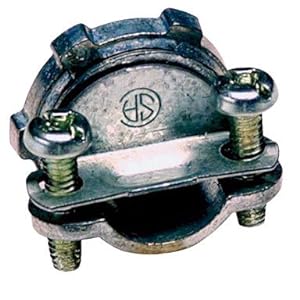It would be better to use a grounded
cord as the box won't normally be grounded to anything if it's used on a set. Houses used to be done this way as they frequently used metallic
conduit which was (in theory) grounded. Now, the practice is against code, but existing 2-wire systems may be
grandfathered in. The only way you can get away with it in residential wiring these days is because a metallic box may be grounded using 2-conductor +
ground Romex. The
ground wire from the
Romex will be bonded to the box, and the
fixture can be bonded either to the box or preferably, directly to the
Romex's
ground wire. If I'm connecting a
fixture to a metallic box in my
house, and the electricians left a
pigtail from where they wrapped the
ground wire around the green
ground screw in the box, I will usually bond the
fixture's
ground to the
pigtail for good measure as you can't always assume that the box will be properly grounded, or that the screws holding your
fixture will provide a sufficient electrical path.
If you don't
ground your metal box, and you
ground the
fixture to this box, you are basically creating an extension of the
fixture, and
current still doesn't have anywhere to go in the event of a fault.
That said, a lot of people use
zip-cord, which is basically
lamp cord. Even so, it is better to
ground something if at all possible.
Hot to narrow blade (copper colored
terminal),
neutral (
socket shell) to wide blade (silver
terminal). In other words, black to copper, white to silver.



